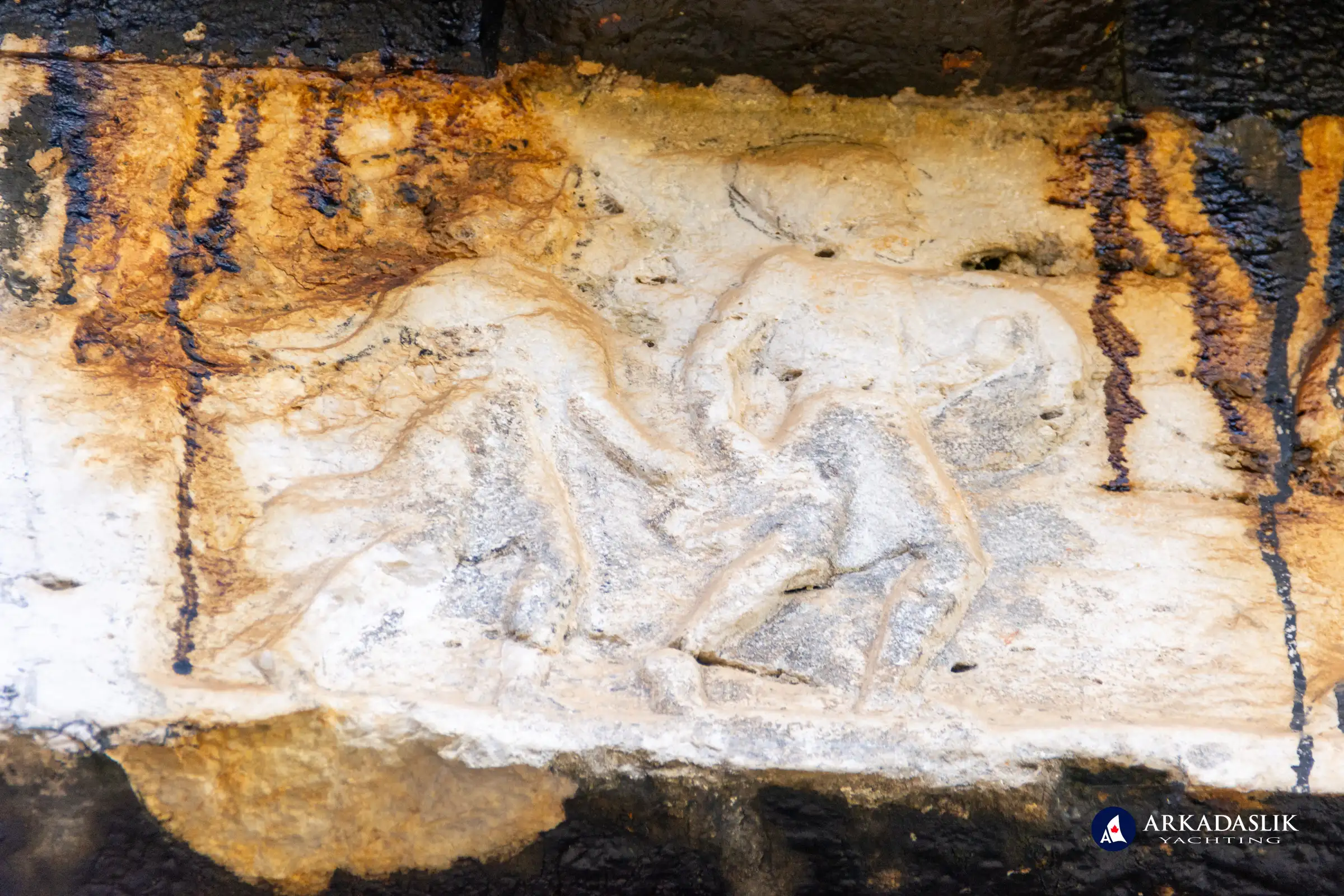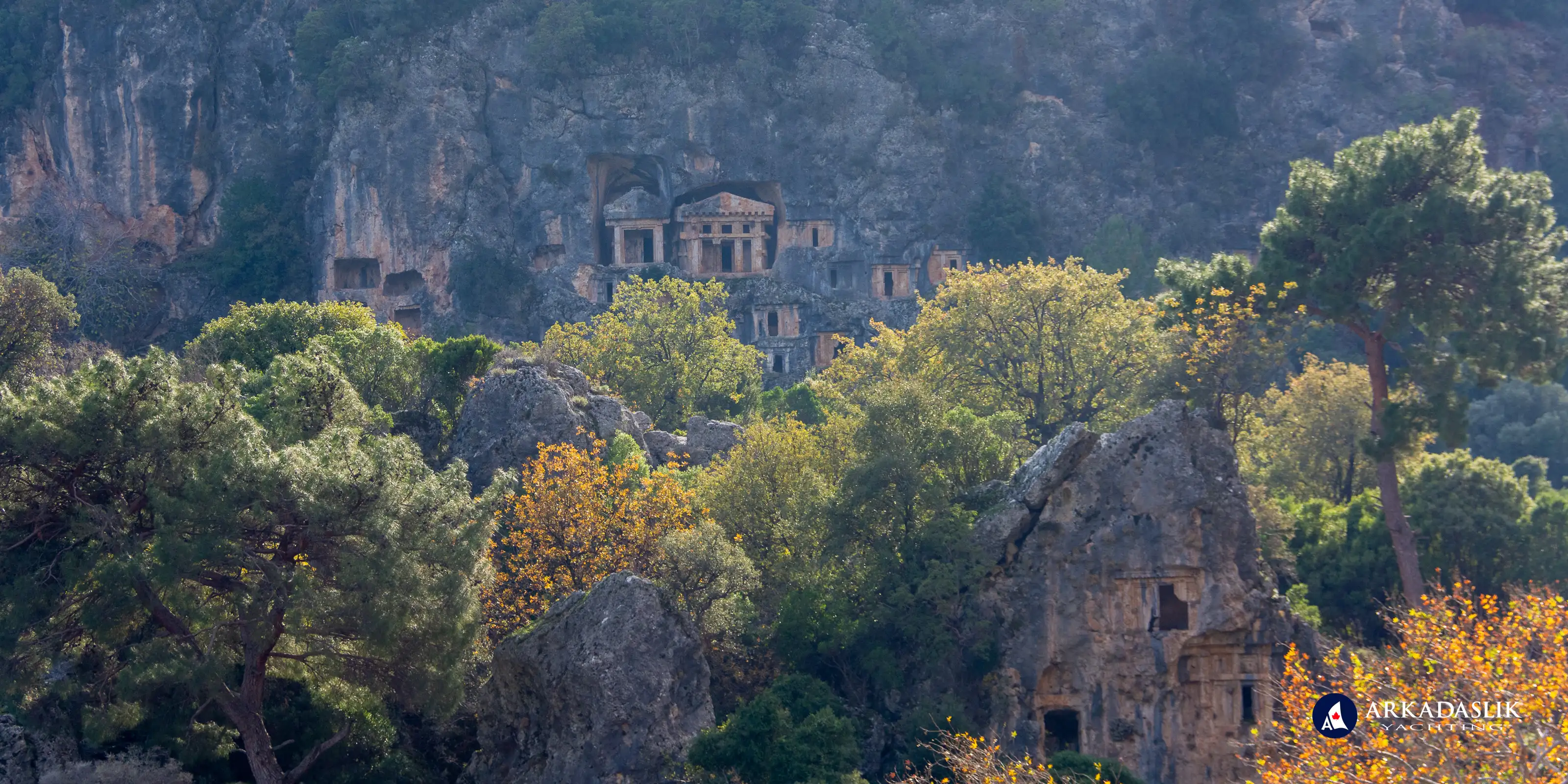Pinara, one of the most prominent cities of the Lycian League, is a site of historical intrigue. Recognized as one of the six largest settlements of the league, it was granted three votes in political assemblies — a clear indicator of its importance. Despite its legacy, much about Pinara remains a mystery, pieced together through archaeology and lore.
Exploring Historic Pinara
Founded to address overcrowding in nearby Letoon-Xanthos, Pinara likely began as a religious center. Temples dedicated to Apollo, Athena, and Aphrodite mark its early history, while a later church from the 3rd or 4th century reflects the rise of Christianity in the region.
What sets Pinara apart is its tranquility. Unlike more commercialized ancient sites, its ruins remain scattered and untouched by modern reconstruction. Earthquakes and looting have taken their toll, but the serene surroundings and scattered remnants invite visitors to imagine its former grandeur. The Hellenistic theatre, built into a hillside, is particularly striking, offering an unmistakable glimpse into the city’s cultural life.
The site also features a bathhouse, agora, odeon, and several temples, all helpfully signposted for visitors.
Tombs of Pinara: A Testament to Lycian Life
Pinara is most celebrated for its tombs, which offer a unique window into Lycian customs. House tombs, carved directly into the rock, mimic the architecture of everyday life, complete with decorative details such as carved roof beams and intricate figures.
The upper acropolis dominates the landscape, its sheer rock face pierced with rectangular burial chambers. As space in the upper acropolis became scarce, a lower acropolis was established, showcasing elaborate tombs designed to resemble the houses of the deceased. On the southern slope of the site, the King’s Tomb stands as an architectural marvel, resembling the Tomb of Amyntas in Fethiye.
Visiting Pinara
Entrance Fees & Facilities
Entry to Pinara is free. A small guard station at the entrance offers water and tea, but no other facilities are available.
Getting There
Pinara lies on Mount Babadağ's eastern side, about 40 minutes by car from Fethiye. There is a small gravel parking area across the road from the guard station.
Accessibility
Due to its rugged terrain, Pinara is not suitable for visitors with mobility challenges. While the theatre is visible from the road, reaching other parts of the site requires sturdy footwear and a good level of fitness.
Pinara in Pictures: Lycian History Preserved
Experience Pinara through the images we've captured on our visits. From its hillside theatre to rock-cut tombs, we're sure you'll appreciate the beauty and history of this charming ancient settlement.
Click on any image to expand.











![Remains of an odeon [small theatre] at Pinara](../img/gallery/211216-2684-thumb.webp)
























Plan Your Visit to Pinara
Although Pinara is not part of our regular cruise itineraries, it makes for an excellent optional day trip from Fethiye. Whether you’re a history enthusiast, a photography lover, or someone seeking tranquility, Pinara offers an authentic and peaceful glimpse into ancient Lycian life.
If you’re planning a visit to Turkey’s Lycian Coast, consider extending your stay to uncover the treasures of Pinara. For a truly unforgettable experience, we encourage you to venture to this serene location and immerse yourself in the history, beauty, and mystery of one of the Lycian League’s most intriguing cities.












![Remains of an odeon [small theatre] at Pinara](../img/gallery/211216-2684.webp)























